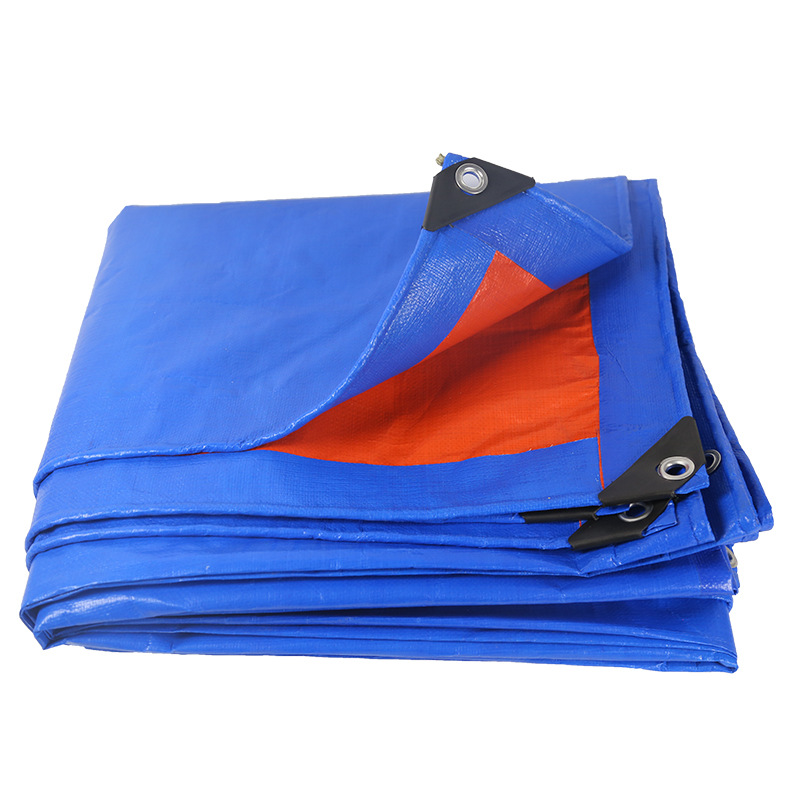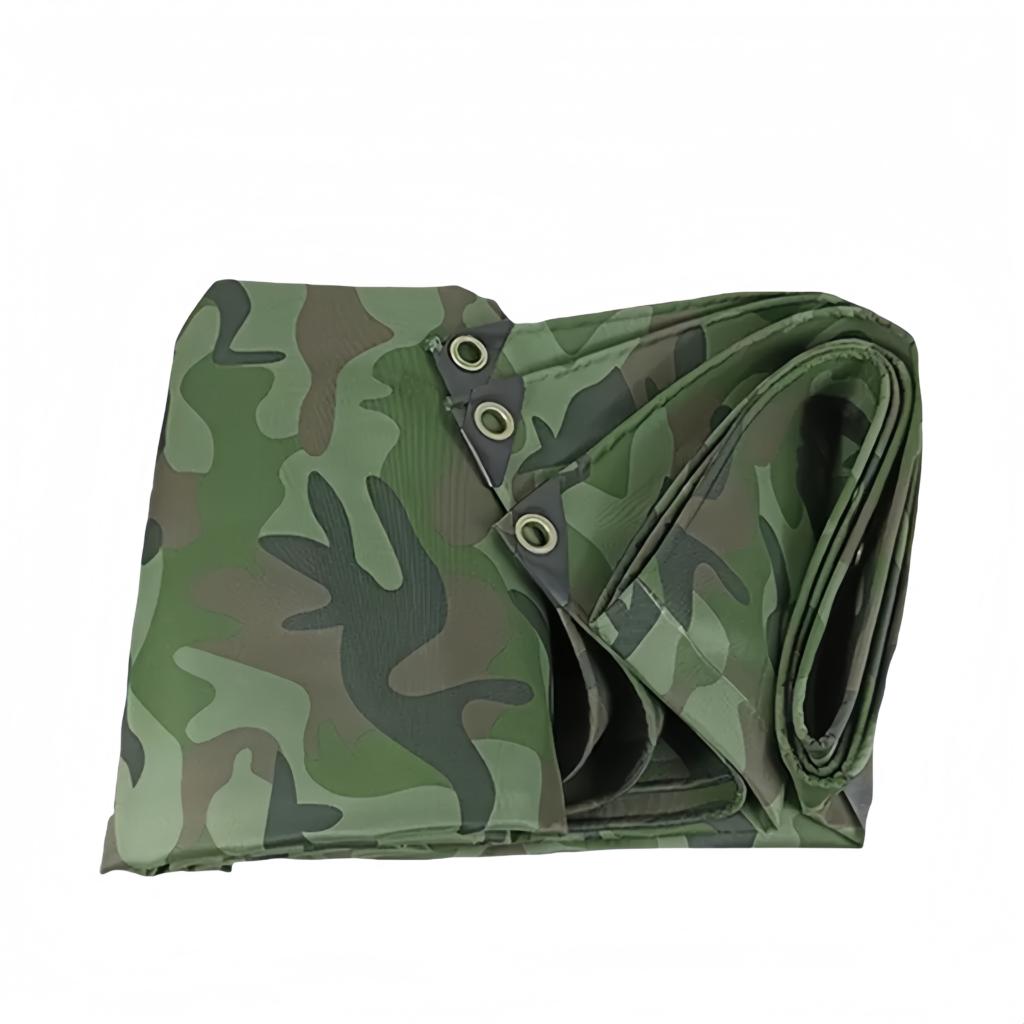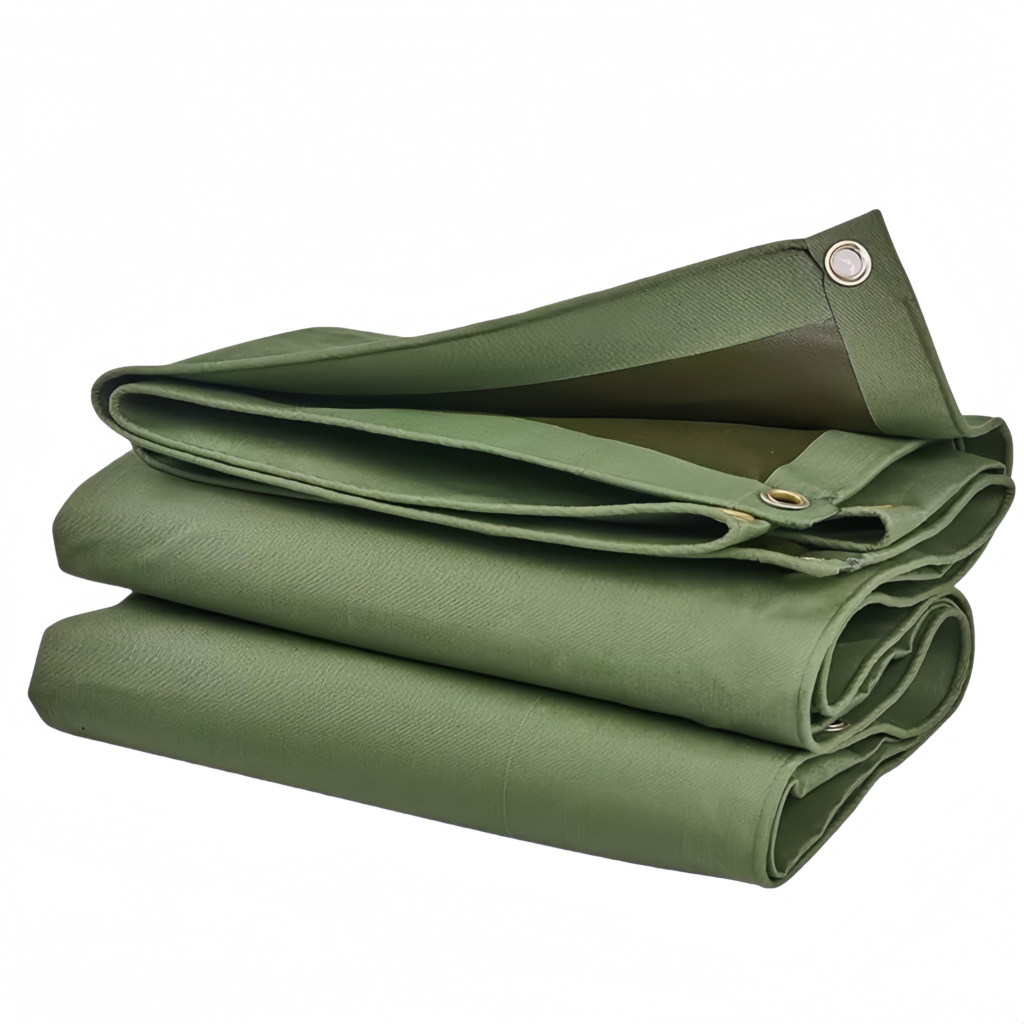Tarpaulin, also known as waterproof fabric, is a kind of fabric material with the functions of waterproofing, windproofing, and dustproofing. It is usually made of materials such as polyester, polyethylene (PE), and polyvinyl chloride (PVC), and its surface is treated with a special coating to endow it with excellent waterproof and durable performance. Tarpaulins are widely used in scenarios such as covering construction sites, protecting crops, transporting goods, outdoor tents, and temporary shelters. They can effectively resist the invasion of rain, sandstorms, and ultraviolet rays, safeguarding the covered items from damage. Depending on their different uses, tarpaulins come in various thicknesses and specifications. There are both lightweight types suitable for short-term use and wear-resistant types suitable for long-term outdoor applications. In simple terms, tarpaulin is a multi-functional, durable, and highly protective covering material.
Tarpaulin Mainly Types
PVC tarpaulin

Made of polyvinyl chloride as the base material, it has a smooth surface and strong waterproof, windproof, and wear-resistant properties. Widely used in industrial covering, transporting goods, and outdoor shading.
PE tarpaulin (polyethylene tarpaulin)

It is light in weight and low in price, with a good waterproof effect, but its wear resistance and anti-aging performance are relatively weak. Use for temporary covering and short-term protection.
Oxford tarpaulin

Based on polyester or nylon fabric and treated with a waterproof coating, it is soft and durable and is often used to make tents, backpacks, and outdoor products.
Canvas tarpaulin

Traditional cotton canvas has undergone waterproof treatment and has good air permeability. It is suitable for shading or light rain protection and is often used for agricultural covering and light industry.
The correct usage steps
- Choose the appropriate specifications and materials.
Choose tarpaulins of appropriate thickness, material, and size according to their uses (such as rain protection, sun protection, dust protection, etc.).
- Clear the coverings and the ground.
Before use, clean the surface of the covering material and the ground to avoid sharp objects or debris puncturing the tarpaulin.
- Lay the tarpaulin.
Spread it evenly to avoid wrinkles and ensure sufficient coverage.
- Fix the edges of the tarpaulin.
Use ropes, straps, or special clamps to fix the four sides of it to prevent it from being lifted by the wind. The buckles or metal buttonholes should be firmly and tightly bound.
- Lap and overlap
When multiple tarpaulins are use for covering, the edges should overlap by at least 20 centimeters and be reinforced with waterproof tape or cable ties to prevent water from seeping in.
- Timely drainage
Avoid water accumulation on the tarpaulin. If puddles form, they should be drained in time to prevent tearing or deformation due to water accumulation.
- Regular inspection and maintenance
During use, regularly check if the tarpaulin is damaged or aged, and promptly repair any small holes or cracks.
What is the lifetime of the tarpaulin?
The service life of tarpaulins varies depending on the material, usage environment, and maintenance conditions. Generally, there are the following reference ranges:
- PVC tarpaulin: About 3 to 5 years. PVC material is water-resistant and wear-resistant, making it suitable for long-term outdoor use. However, its lifespan will be shortened in environments with strong ultraviolet rays, high temperatures, or frequent mechanical friction.
- PE tarpaulin (polyethylene): 1 to 2 years. PE tarpaulin is light in weight and low in cost and is mostly used for temporary covering. However, it has relatively weak durability and is easily affected by ultraviolet rays and wind and rain.
- Oxford tarpaulin: 3 to 4 years. Polyester base fabric with waterproof coating, wear-resistant and soft, suitable for medium- and long-term outdoor use.
- Canvas tarpaulin: 2 to 3 years. Cotton canvas has undergone waterproof treatment and has good air permeability, but it is prone to moisture and mold and has a relatively short lifespan.
- Aluminum foil tarpaulin: 4 to 6 years. It has good heat insulation and waterproof performance but is relatively sensitive to mechanical wear.
Factors affecting lifespan:
- Environmental conditions: Intense ultraviolet rays, acid rain, high temperatures, high humidity, etc., can all accelerate the aging of materials.
- Usage frequency and intensity: Frequent stretching, folding, and friction will shorten the lifespan.
- Maintenance and care: Timely cleaning, avoiding scratches from sharp objects, and proper storage can significantly extend the lifespan of the tarpaulin.
Conclusion
If you have any extra doubts about the tarpaulins, contact us freely to get more information.


